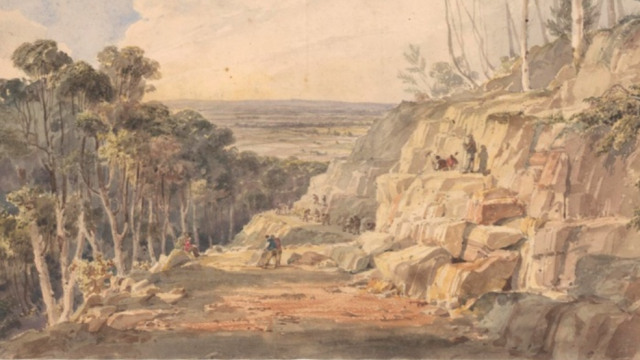Helen Hughes | An Absence of Conviction: On the Apparent Lack of Convicts Depicted in Early Colonial Art
Date & time
Location
Contacts
SHARE

This event will be held both on-campus and online
It is often said that convicts are largely invisible in early colonial Australian art. This is intriguing, because convicts were one of the main groups of artists working in Van Diemen’s Land and New South Wales to record the development of the penal colony. Terry Smith, in his sweeping survey of colonial art depicting convicts, has argued that images of convictism, and of convicts as a class, “are rare to the point, not just of oversight, but of repression.” This repression, he suggests, both reflects shame over the nation’s origin story as a penal colony as well as indexes colonial market tastes and values.
This paper will extend and deepen previous analyses of the near-invisibility of convicts in early colonial art by discussing a range of paintings, drawings, embroideries, transparencies, and other craft objects whose references to convictism may be said to be hidden in plain sight. The significance of convictism hiding in plain sight yields several key insights. The first is that artists frequently used humour and cunning to critically reflect on the conditions of convictism and to work around the market-inflected visual ban. The second is that the carceral logic of the penal colony was, in many instances, so thoroughly diffuse that it ceased to be representable as such—or at least through traditional figurative means. Thirdly, by analysing depictions of non-white convicts, including Indigenous resistance fighters, Māori political prisoners, and Black, formerly enslaved convicts, this paper will identify an invisible but no less powerful colour line that continues to whitewash the popular understanding and memory of convictism in Australia. Whilst these groups represent statistically smaller portions of the overall population of convicts transported between 1787 and 1868, the enduring impact of their racialised incarceration has been profound, which is why it is important to pay attention to these rare images.
Dr Helen Hughes is the Deputy Head of the Fine Art Department at Monash University and a Senior Lecturer in Art History, Theory and Curatorial Practice. Her research into colonial Australian convict art has been supported by a Getty/ACLS Postdoctoral Fellowship in Art History, a Paul Mellon Centre for Studies in British Art Mid-career Fellowship, and a Sir William Dobell Art History Fellowship at the Australian National University. Her book on the topic is under contract with Manchester University Press.
This event will be held both on-campus and online via Zoom (a link to the online stream will be sent to registered attendees).
The School of Art & Design Seminar series will continue weekly on Tuesdays from 1-2pm, between 16 July and 29 October 2024.
The School of Art & Design Seminar Series is co-convened by Dr Alex Burchmore, Alia Parker, and Elisa Crossing.











